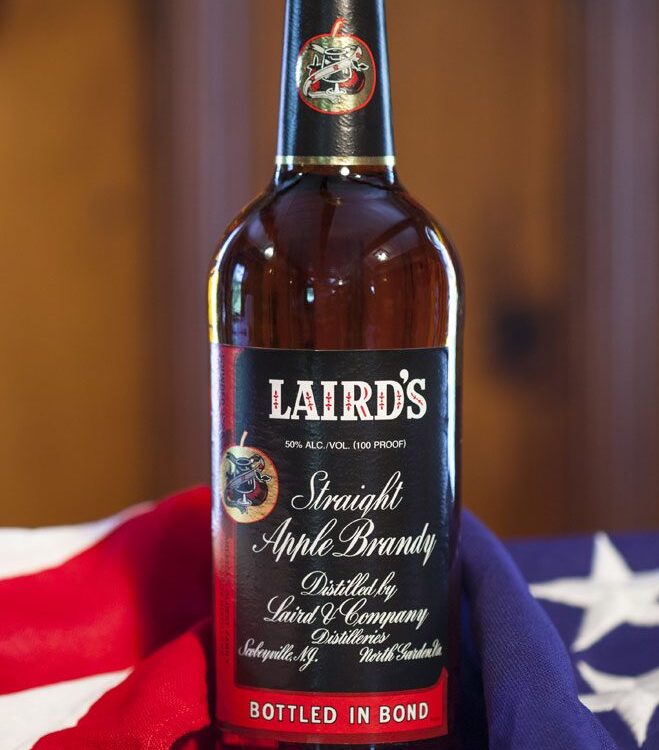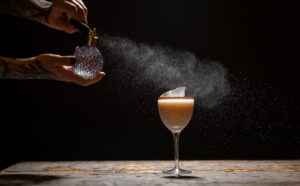Virginia Spirits 101: Brandy
Gin, moonshine, brandy, vodka and whiskey. While these are all some of the top-produced spirits in Virginia, one of these is not like the other.
Traditionally speaking, distilled spirits come from the mashing and fermentation of grains. Brandy, on the other hand, comes from distilling fruit juice or wine. In fact, the name comes from the Dutch word “brandewijn,” which means “burnt wine.” Brandy can be made from many different fruits– products not made from grapes must be labeled with the fruit it’s made from.
With so many unique flavor options and profiles, the opportunities are endless with Virginia brandy. Today, there are more than a dozen brandy producers spanning across the commonwealth. Keep reading to learn more about the process of making it, where to find it, how to properly store it and how to best enjoy it.
How to Make
The brandy distillation process is similar to most other spirits; the difference really comes from the origin product.
- Harvest and Prepare Fruit – Harvest any type of fruit, wash and extract the juice.
- Ferment the Juice – Adding yeast to the fruit juice will ferment it (turning the sugars into alcohol over a period of days to weeks).
- Distill the Fermented Juice – Once fermentation is complete, the resulting wine or fruit mash is distilled in a pot still or column still. Heating the liquid will separate alcohol vapors from the rest of the liquid; condensation will leave a resulting liquid.
- Cut the Distillation – During distillation, separate the “heads” (the first part of the distillate), “hearts” (the middle, highest-quality alcohol) and “tails” (the last part). The hearts are the most desired and used.
- Age the Brandy (Optional) – Brandy can be aged in wooden barrels (typically oak) for months or years to develop flavor and smoothness.
- Dilute and Bottle – After aging, the brandy may be diluted with water to reach the desired alcohol content (typically 35-40% ABV).
*If interested in making your own brandy, you must follow Virginia codes and regulations.

The Virginia Way
Several distilleries in Virginia have been producing high-quality brandy for decades, often sourcing from local fruits like apples and grapes. In fact, “America’s Oldest Distiller,” Laird & Company has sourced its apple brandy from fresh Virginia apples since the mid-1970s.
Virginia brandies are often characterized by their fruit-forward flavors and smooth finishes, making them ideal for sipping neat, enjoying on the rocks or incorporating into cocktails.
How to Shop
You have two simple options to purchase a local bottle of brandy: At Virginia ABC stores or straight from the source at a distillery. With 400+ stores, you’re likely not far from a Virginia ABC store. If your store doesn’t have what you’re looking for, you can order online and have it shipped to a store of your choice within 7-14 days.
If you’re looking for an experience and you want the opportunity to try before you buy, visiting a local distillery is your best bet. Plus, you’ll even find some small-batch products at the distillery that may not be on the shelves or listed with Virginia ABC.
You could also mark your calendar for the September Sale-A-Bration, or as we like to call it: Virginia Spirits Month. For the whole month, many Virginia spirits, both in-store at Virginia ABC and at distillery tasting rooms, are offered at 20% off regular retail prices. The perfect time to stock up or try something new.
Finally, simply ask for “Virginia-made” at your favorite restaurant. Chat with your bartender or server to determine a cocktail recommendation or which ones are available for a sip. The more we ask for and support local, the more you’ll see Virginia on the menu!
How to Store
To ensure your bottle of Virginia brandy remains in great condition, keep these storage tips in mind:
- Keep it Upright – Unlike wine, you should store the bottle upright to prevent the cork from coming into contact with the alcohol, which can deteriorate the cork and affect the flavor over time.
- Store in a Cool, Dark Place – Light, especially sunlight, can degrade the quality of the brandy. The ideal storage temperature is between 55-60°F (13-15°C). Most importantly, avoid temperature fluctuations!
- Avoid Humidity – Look for a dry environment to avoid damaging the label or seal.
- Seal the Bottle Properly – After you open it, make sure the bottle is kept closed tightly to prevent air from entering, which can oxidize and spoil the brandy over time.
The joy of spirits is that your bottle can last months or even a few years after opening, but be mindful of its exposure to air. The longer it’s open, the more the flavor may change, so consume it within a reasonable timeframe to enjoy its best qualities!
How to Enjoy
Brandy is a rich, complex spirit with tasting notes that can vary depending on the type of fruit used, the distillation process and whether or not it has been aged.
Tasting Note Considerations
- Fruit – You’ll often find notes of dried fruits like raisins, prunes or figs, especially in aged brandies. For younger ones, expect fresh fruit flavors like apple, pear or citrus.
- Spices – Vanilla, cinnamon, nutmeg and cloves are common, particularly in aged brandy that has spent time in oak barrels.
- Oak: Aged brandy will have a woody, toasty flavor with hints of caramel, toasted nuts and sometimes a slight smokiness, depending on the aging process.
- Sweetness: Brandy can have a smooth, sweet profile due to the natural sugars from the fruit. Some brandies have a rich, syrupy sweetness, while others are drier.
- Floral or Herbal: Light floral notes, such as rose, lavender or orange blossom, can come through, while some brandies may show subtle herbal notes like mint, thyme or fennel.
Cocktail Inspiration

From Brandy Sangarees (brandy + port wine + sugar) to sangrias, brandy makes for the perfect complement to your cocktail concoctions. Brandy can be a great base for a variety of cocktails, adding depth and richness. Virginia brandy also was a favorite among bartenders who entered in The 2024 Virginia Cocktail Games (see Grande Dame – pictured above, Lasting Legacy and Olympic Torch). Here are some classic ways to use brandy:
Brandy Alexander
- Ingredients:
- 1 ½ oz brandy
- 1 oz crème de cacao (dark)
- 1 oz heavy cream
- Grated nutmeg (for garnish)
- Instructions: Shake all ingredients with ice and strain into a chilled cocktail glass. Garnish with freshly grated nutmeg.
Discover More Virginia-Made Brandy Cocktail Recipes
Sidecar
- Ingredients:
- 2 oz brandy
- 1 oz Cointreau (or triple sec)
- ¾ oz fresh lemon juice
- Sugar for rim (optional)
- Instructions: Shake all ingredients with ice and strain into a sugar-rimmed coupe or martini glass.
Brandy Sour
- Ingredients:
- 2 oz brandy
- ¾ oz fresh lemon juice
- ½ oz simple syrup
- Ice
- Lemon twist (for garnish)
- Instructions: Shake the brandy, lemon juice, and simple syrup with ice, then strain into a rocks glass filled with ice. Garnish with a lemon twist.
French Connection
- Ingredients:
- 1 ½ oz brandy
- 1 ½ oz amaretto
- Instructions: Pour both ingredients into an old-fashioned glass with ice and stir gently.
Metropolitan
- Ingredients:
- 2 oz brandy
- 1 oz sweet vermouth
- 2 dashes Angostura bitters
- Instructions: Stir all ingredients with ice and strain into a chilled coupe glass.
Pairing Ideas for Brandy
- Cheese – Brandy pairs beautifully with rich, aged cheeses like Gouda, cheddar or Manchego – or fresh, soft cheeses like Brie or Camembert work well with fruity brandies.
- Chocolate – Dark chocolate (70% or higher) is an excellent pairing, as the bitterness balances the sweetness of the brandy. Try pairing with chocolate truffles or chocolate-based desserts.
- Nuts – Roasted almonds, hazelnuts and pecans complement the nutty, oaky flavors found in many aged brandies.
- Fruit-Based Desserts – Fruit tarts, crème brûlée or poached pears work well with brandy, enhancing the fruit notes while the caramel and vanilla flavors in the brandy match the sweetness of the desserts.
- Grilled Meats – A rich, aged brandy can complement smoky, grilled meats such as steak or roasted game meats.
- Spicy Dishes – Brandy can handle some heat, so try it with Indian, Cajun, or Mexican cuisine. A lighter brandy pairs well with spiced dishes like curry, while a richer brandy goes well with barbecued meats or mole.
- Cigars – For an indulgent pairing, a fine brandy (particularly aged) goes hand-in-hand with a high-quality cigar. The rich flavors of both complement each other and make for a relaxed, luxurious experience.
Whether you prefer to sip your Virginia brandy neat or enjoy it in a cocktail, these pairing ideas should enhance the experience and help you discover new flavors!
Learn about all Virginia spirits through our extensive 101 series.